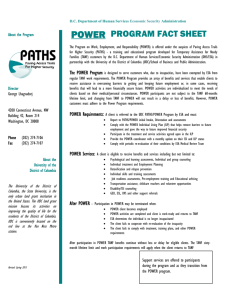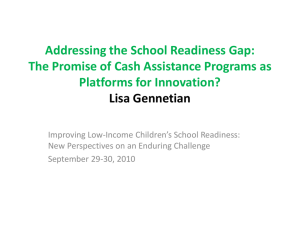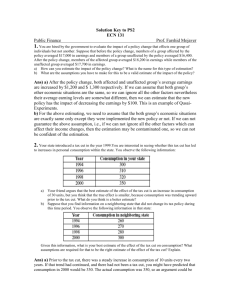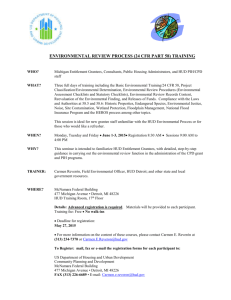EXAMPLE #4 Strategic Partnership to Promote Self
advertisement
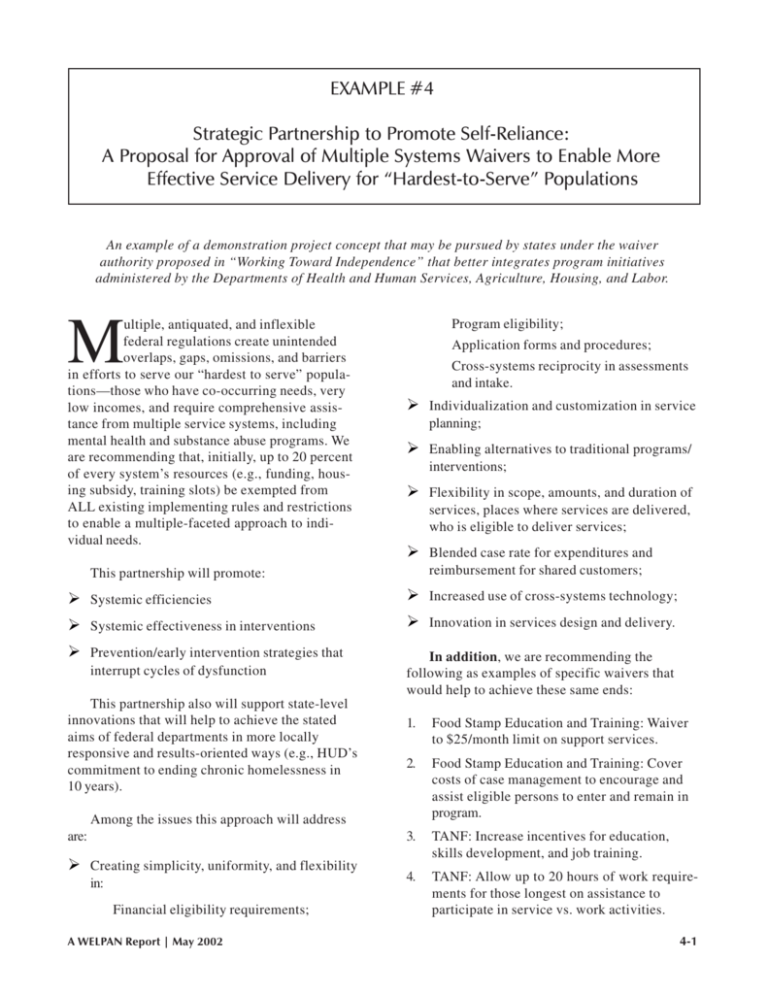
EXAMPLE #4 Strategic Partnership to Promote Self-Reliance: A Proposal for Approval of Multiple Systems Waivers to Enable More Effective Service Delivery for “Hardest-to-Serve” Populations An example of a demonstration project concept that may be pursued by states under the waiver authority proposed in “Working Toward Independence” that better integrates program initiatives administered by the Departments of Health and Human Services, Agriculture, Housing, and Labor. M ultiple, antiquated, and inflexible federal regulations create unintended overlaps, gaps, omissions, and barriers in efforts to serve our “hardest to serve” populations—those who have co-occurring needs, very low incomes, and require comprehensive assistance from multiple service systems, including mental health and substance abuse programs. We are recommending that, initially, up to 20 percent of every system’s resources (e.g., funding, housing subsidy, training slots) be exempted from ALL existing implementing rules and restrictions to enable a multiple-faceted approach to individual needs. Program eligibility; Application forms and procedures; Cross-systems reciprocity in assessments and intake. Individualization and customization in service planning; Enabling alternatives to traditional programs/ interventions; Flexibility in scope, amounts, and duration of services, places where services are delivered, who is eligible to deliver services; Blended case rate for expenditures and reimbursement for shared customers; This partnership will promote: Systemic efficiencies Increased use of cross-systems technology; Systemic effectiveness in interventions Innovation in services design and delivery. Prevention/early intervention strategies that interrupt cycles of dysfunction This partnership also will support state-level innovations that will help to achieve the stated aims of federal departments in more locally responsive and results-oriented ways (e.g., HUD’s commitment to ending chronic homelessness in 10 years). In addition, we are recommending the following as examples of specific waivers that would help to achieve these same ends: 1. Food Stamp Education and Training: Waiver to $25/month limit on support services. 2. Food Stamp Education and Training: Cover costs of case management to encourage and assist eligible persons to enter and remain in program. 3. TANF: Increase incentives for education, skills development, and job training. 4. TANF: Allow up to 20 hours of work requirements for those longest on assistance to participate in service vs. work activities. Among the issues this approach will address are: Creating simplicity, uniformity, and flexibility in: Financial eligibility requirements; A WELPAN Report | May 2002 4-1 5. 6. TANF: Allow easy return to assistance (payment assistance, emergency assistance, Education and Training, and support services) for families who have left assistance owing to earned income. TANF: To encourage family formation and stability, allow a certain number of required participation hours to be used for participation in school activities with children. 7. TANF: Exclude housing subsidies as “assistance.” 8. TANF: Allow TANF for housing construction and rehabilitation, etc. 9. TANF: Allow states to specify criteria, such as local cost of living, to allow extension to 60-month time limit. 10. TANF: Allow use of TANF funds for case management services to noncustodial fathers (with goal of encouraging family involvement). less families and individuals (to enable use of supportive services in extended supportive housing model). 14. HUD: Override Supportive Housing Program restrictions that preclude use of supportive services for homelessness prevention activities. 15. HUD: Override Supportive Housing Program restrictions that impose overly constraining definition of “homelessness”—to include precariously housed, those in involuntary doubled-up situations, those in substandard housing (consistent with McKinney Homeless Act rules as enacted in Department of Education). 16. HUD: Override Supportive Housing Program restrictions to enable use of Permanent Supportive Housing funds for homeless families/individuals with significant service needs but without qualifying disabilities. 11. TANF, WIA, etc.: Look at ways to use these funds to encourage job skills development following termination from public assistance owing to earned income. 17. HUD: Allow local Continuum of Care planning bodies to retain control and define redirection of any unutilized or recaptured SHP funds (enabling funds to remain in community or state). 12. HUD: Provide ability to override Section 8 waiting lists, to allow targeting consistent with state’s self-sufficiency efforts. 18. HUD: Allow CDBG funds to be utilized toward costs of new construction for projects targeting homeless/hard-to-serve populations. 13. HUD: Override Supportive Housing Program restriction to a 6-month follow-up/supportive services assistance to recently housed home- 4-2 A WELPAN Report | May 2002

